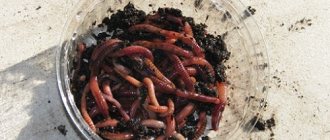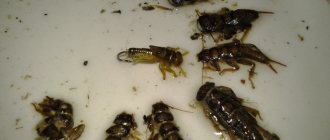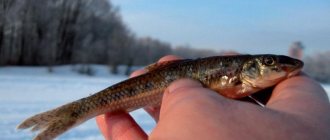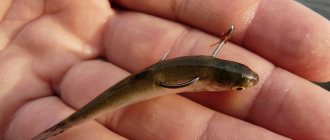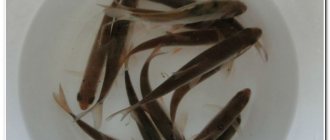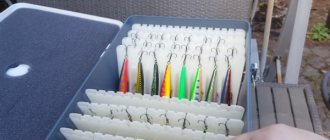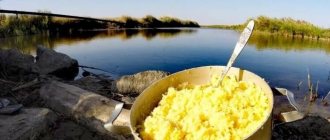Published: 03/04/2016
Maggots and worms are most often used when catching most fish with bottom and float tackle. These baits stay well on the hook even during long casts. But in the summer, when active fish biting can alternate with complete calm, plant baits become the main ones.
Especially when fishing for carp fish, pearl barley, semolina, corn, peas, and millet can give excellent results. In this article we will look at several recipes for the most popular plant baits for feeder and float fishing.
How to prepare semolina for attachment?
First on our list is semolina. And this is no coincidence. It has truly unique properties when fishing for carp and crucian carp. But for some reason, not many fishermen use it. Most people think that it is very difficult to prepare semolina so that it stays well on the hook. But that's not true. The given recipe allows you to prepare a chatterbox that will be suitable for bottom fishing and float tackle.
- Take semolina. We pour “by eye” as much as the nozzle we need.
- Add water to the semolina so that it slightly covers the semolina on top.
- At this stage, you can add the desired flavor if necessary. It is worth noting that in most cases the smell of the semolina itself is quite enough, and excess flavorings can scare away the fish;
- The semolina is infused for 20 minutes. After this time, we begin to mix it.
You need to stir it continuously for 10-15 minutes. Moreover, if there was initially more water than needed, then at the mixing stage you can add dry semolina a pinch at a time to achieve the desired thickness. You need to stir until the semolina begins to stretch behind the spoon, creating threads 3-4 centimeters long. At this stage, grains of semolina will no longer be visible.
The longer we stir the mash, the thicker it becomes. For bottom fishing and long casts, a thicker mixture is better; for fishing from a boat, with float tackle, a more delicate one.
Fill the syringe or syringes with the finished semolina mash. If necessary, you can store such syringes filled with mash in the freezer; When fishing, we squeeze the chatter out of the syringe and wrap it around the hook.
Live baits for fishing
The most popular live baits among anglers are worms, bloodworms, maggots and dragonfly larvae, caddis flies, leeches, mole crickets, etc. However, worms and bloodworms are not always suitable for fishing in a particular body of water. Maggot stands apart as the most versatile live bait.
There is an opinion that fish prefer the food that is located within the reservoir or around it. Very often, local fishermen easily catch visiting fishermen, from whom all the baits were purchased in the store.
It happens that fish bite very sluggishly on delicious California worms or large bloodworms, but as soon as you put a leech found near the shore on the hook, confident bites follow. Moreover, a leech may be inconspicuous and not so appetizing, but the fish clearly prefers it. What does this mean? This suggests that if the bite is weak or completely absent, you should not fold your arms and wait for the bite. You need to change attachments and look for more suitable ones. Moreover, near the reservoir you can find caddis flies, dragonfly larvae, and the same leech. It is clear that in this case it is easier to start the meal in an alcoholic format, telling them that today is not a day for fishing. But in this case, the fishing will end before it really begins.
How to prepare semolina dough for the nozzle?
Semolina dough is a more reliable and suitable attachment for long-distance casting with a feeder. Here are two recipes for preparing such a dough. First recipe for faster cooking:
- Take the required amount of semolina and fill it with water up to the level of the grain.
- Let it brew for 15 minutes.
- Pour some oil into the frying pan.
- Pour a spoonful of semolina into a heated frying pan and level it.
- After a couple of minutes, the semolina begins to become transparent - this is an indicator of readiness. Turn our pancake over to the other side. The semolina pancake should not be literally fried, crackling in oil and turning yellow. The semolina should warm up little by little without burning. When the pancake becomes transparent, remove it from the pan.
- After the pancakes have cooled, knead them with your hands.
- It is better to put the still warm semolina dough in a bag and cover it with a cloth so that it sweats for about 20 minutes.
- Then transfer the dough into a dry container. It's completely ready.
The second method of preparing semolina dough:
- Fill the semolina with water and leave for 20 minutes.
- We transfer the semolina onto a piece of gauze and tie it, making a bag. At the same time, we leave a little space in the bag, about 25%, so that the semolina can swell.
- Place the bag in boiling water.
- Cook for about 10 minutes, during which time the semolina will swell and take up all the free space in the gauze.
- We take out the semolina, wait until it cools down, and knead it for a few minutes. The dough is ready. If necessary, you can add the desired scent.
Caddisfly

A suitable bait for fishing peaceful fish, especially roach and bream, is a caddis fly. This is a butterfly larva that lives in the bottom layer with tube holes. They can be found near stones, snags and near underwater vegetation.
You can collect caddisfly larvae using a small butterfly net. The principle is approximately the same as when searching for bloodworms. The silt is scooped out from the bottom and thrown ashore. You can pull out a bunch of grass and check the mud around the roots of the plants. In any case, there must be some larvae there.
Place caddis flies one at a time or several at a time. The best baits are dark green in color. They are larger in size and fit better on the hook. The butterfly itself is an excellent bait. She flies and lands on water, objects and human clothing. It's not that difficult to catch her.
How to prepare pearl barley for bait?
On our website we have already published a whole article about how to properly prepare pearl barley for fishing. There we examined in detail several recipes and the differences between boiled and steamed pearl barley. In this article we will present, in our opinion, the best option for preparing pearl barley.
- Take a thermos with a wide neck and fill it with pearl barley no more than a quarter of its volume (when the barley swells, the barley increases approximately 4 times). In other words, add pearl barley by eye to 4 times less than the required volume.
- Add 1-2 tablespoons of sugar to the barley (or at the end add honey to the ready-made barley).
- Fill the thermos with boiling water, making sure to leave some free space (about a fifth).
- Let the barley brew for 3 hours. This is the optimal time for the pearl barley to become soft enough and at the same time hold well on the hook. Let us remind you that it is better to pierce pearl barley with a hook in the middle with a black stripe.
- After the barley has steeped, drain the water and pour the barley onto newspaper to dry. After that, sprinkle it with dry bait or breadcrumbs.
- Freshly prepared pearl barley is best suited for fishing, but if necessary, you can store it in the refrigerator for 1-2 days.

Worms
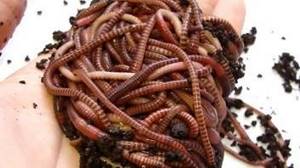
The most versatile live bait is worms. There are many types of worms in nature. Dung ones are best suited for fishing. They should be quite juicy, have a bright burgundy color and have characteristic transverse yellow rings. Their skin should be of medium hardness, so that on one side the fish can bite off a piece, and on the other, so that the worm, or part of it, after the voles still has a more or less marketable appearance of the shank of the hook. Dung worms can be found in old straw and manure piles.
Under dilapidated and rotten boards, in last year's foliage, a leaf worm lives. It is easy to get it in a planting, an abandoned square or in a park.
Puffballs can be found in large numbers after rains. They can be collected right on the road. Earthworms live in the beds and in the soil.
Large white worms are found in ravines and meadows. These worms have very tough skin. It is better to fish with them in situations when there are a lot of small fish and gobies in the reservoir. These fish are not able to easily remove such a tough and large worm from the hook.
A crawling worm is suitable for catching catfish. It can be found in a flower bed at night. After the rains, such worms crawl out of their holes. They are assembled with a lantern.
The worms are planted with stockings, rings, parts, bunches, several pieces at a time, the sting is covered and left open. The figure shows options for putting worms on a hook:
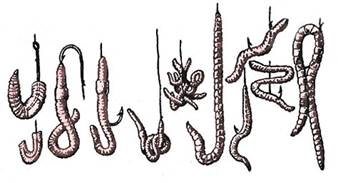
When catching bream on a bottom, bunches of worms are placed on the hook. In the spring, when actively fishing for crucian carp, it is sometimes better to attach pieces of worms. The bites will still not decrease, and the bait will be used sparingly.
Store the worms in moist humus in a box with holes. Before fishing, it is recommended to keep the worms in damp moss for 24 hours. They turn out elastic and more appetizing to fish.
How to prepare peas for bait?
Peas are one of the best baits for bream, crucian carp and crucian carp. We have already published several articles devoted to its preparation:
How to cook peas for fishing?
How to cook peas for fishing
Here we describe the simplest cooking recipe :
- For the attachment we buy large, unshelled peas. Chickpeas are most often sold on the market - so it is better to use them.
- Fill the peas with water up to 2-3 cm above their surface, and let it brew for 2-8 hours (the more we insist, the less we will cook).
- After this, cook the peas. You can do this in a regular saucepan, making sure that the peas do not burn. In this case, when boiling, it is necessary to remove the foam several times. To avoid burning, you can cook in gauze or in a water bath.
- Cook for from 20 minutes to 2 hours - depending on the freshness of the peas themselves and the time of their preliminary infusion. Cook until the peas become soft and easy (with some effort) to crush with your fingers. The most important thing is that the skin on the peas remains intact.
- When the peas are ready, to stop the cooking process, cool them with cold water.
- If necessary, these peas can be stored in the refrigerator for several days.
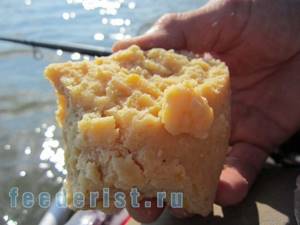
Semolina porridge is a universal bait for fishing
There are three ways to prepare this cereal - steaming, boiling or making semolina mash directly while fishing. The choice depends on the fishing method and conditions. There are several recipes for preparing semolina bait for fishing. Let's look at the most effective ones.
Chatterbox
This bait is not intended for long-term storage. The method for preparing semolina is to stir the cereal with water in a bowl and add flavorings. It is advisable to use cold water to increase viscosity. Then the porridge should swell for 10-15 minutes. After this, it is mixed again, balls are formed for attaching to a hook or placing in a feeder.
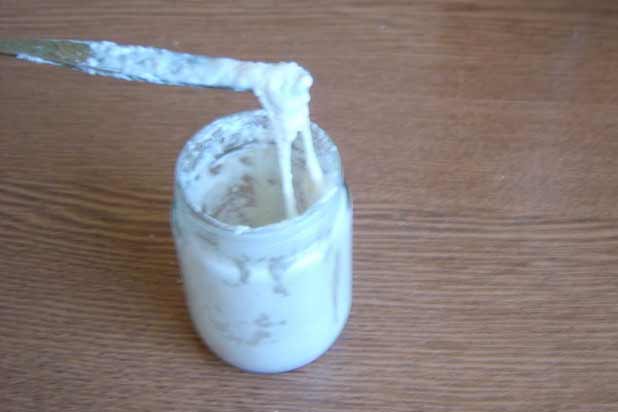
Cooking tips:
- water must be added gradually, bringing the composition to the formation of a dough;
- after kneading, excess liquid must be drained;
- add spices - vanilla, oil, coriander.
It is recommended to add spices in separate portions. This will help determine the best composition for the intensity of the bite. The shelf life of semolina for crucian carp does not exceed 5-6 hours. After this, it can be used as a basis for preparing the next portion, but with the obligatory addition of semolina and flavorings.
Steaming
You can steam semolina only at home. You will need a saucepan and standard additives. It should be less dense than mash. Application – for placing in a feeder or bait.
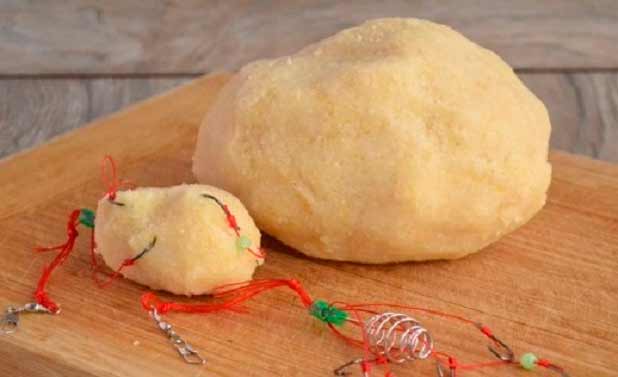
Preparation procedure:
- pour water into a saucepan, put on fire and wait until it boils;
- the cereal is added in a small stream, it must be stirred constantly;
- After obtaining a homogeneous mass and soaking, remove the pan from the heat without ceasing to stir the contents;
- seal the container with a towel, allowing the porridge to brew;
- after 1.5-2 hours the contents are mixed.
To prevent the finished mixture from sticking to your hands, it is recommended to pre-lubricate them with sunflower oil. This will give the future bait an additional aroma.
How to choose an inexpensive and reliable echo sounder for fishing from a boat and from the shore
Cooking
The best cooking method is boiling the cereal. At first she insists. You need to pour the semolina into a pan and add water so that its level is 3-5 cm higher than the cereal. Then the mixture should sit for 8-12 hours. It is recommended to do this at night.
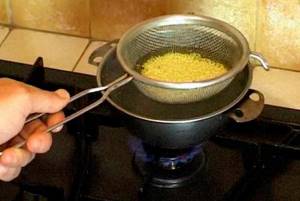
The composition is poured into the prepared canvas bag. The pan is filled with water and placed on fire. After the liquid boils, a bag of cereal is lowered into it. Cooking time – up to 20 minutes. The last stage is mixing.
Experienced fishermen prefer to fish with several types of bait. Therefore, it is recommended to prepare various porridges in order to determine the best option locally. The fish may be picky about what they eat and may not bite the standard bait.

Alexander
Hello, I'm Alexander, the mastermind behind the blog. In terms of career and free time, I connected my life with the forest. How could it be otherwise when you live in Karelia! In this blog, I am responsible for sections dedicated to hunting, hiking and equipment. Welcome to my world!
How to prepare pea mastyrka for fishing?
Another very popular attachment, which is not at all difficult to prepare. Mastyrka, in other words, is pea dough. There are a ton of recipes. Here is another popular way of preparing it:
- Take shelled peas and cook simple pea porridge. Fill the peas with water to the top and cook for a couple of hours, stirring constantly. There are many ways to cook pea porridge without burning. Here everyone chooses for themselves depending on the available kitchen appliances. To prevent the peas from running away when boiling, you must first remove the foam.
- When the pea porridge is boiled and looks like thick sour cream, turn off the heat, add semolina and stir. We do this in several stages. Ultimately, semolina should cost 2 times more than ready-made pea porridge.
- The mastyrka will be ready when it becomes very difficult to stir.
- After it has cooled, knead the finished mastyrka, form it into a ball, and let it reach the desired condition for another hour or two.
This was the most classic method, and a faster way to prepare mastyrka is as follows:
- Grind the split peas in a coffee grinder to make pea flour.
- Mix the resulting flour with water until it becomes thick sour cream.
- Brew the resulting mixture for just a couple of minutes on the fire.
- Add semolina step by step and mix. We do this until the mastyrka becomes thick and it becomes difficult to mix.
- Wet our hands with vegetable oil and knead the mixture well for several minutes.
- The mastyrka turns out sticky, similar to plasticine. If you need to use it for bottom fishing with a feeder, then you should add more decoy. At the same time, the mastyrka will become denser and will stay on the hook better.
Collecting gear for moth fishing
The gear should consist of a short rod with a whip, a nod, a fishing line and a jig. The nod serves as a bite alarm and replaces the float. Mormyshki differ from each other in weight, size, shape and color. Most models are made from lead, but other materials are often used these days.
The most suitable materials for making a whip are polycarbonate, vinyl plastic and nylon. Such materials are resistant to cold air in winter because they retain strength and elasticity.
In fishing stores you often find plastic whips. They should be avoided as they are not strong enough.
The length of the whip will depend on the individual preferences of the angler.
In winter, the fish are inactive, and for this reason it is difficult to provoke them to bite. It is not recommended to use thick fishing line, as it has a negative impact on the performance of the jig. The optimal diameter is 0.1−0.14 mm.
The nod not only signals bites, but also influences the play of the jig. To catch perch and ruff, short nods are used, and for white fish, longer ones (about 15 cm) are used. Polycarbonate or lavsan are used as materials for nods.
Such nods are resistant to severe frost, do not break under stress and show good bites.
The nod must be designed so that its length can be changed during fishing. The length will depend on how much the jig weighs. The heavier the jig, the shorter the nod should be.
The sensitivity of the nod to bites depends not only on its elasticity, but also on its design. If you use a short pole and a thin line, it is recommended to use a fastening in the form of a rubber coupling.
How to prepare potatoes for bait?
Potato mastyr is often capable of attracting large fish in seemingly the most hopeless situations. Potatoes, first of all, attract carp; large crucian carp are often caught on them. Cooking potatoes is similar to making pea mash.
- We peel the potatoes and make regular mashed potatoes, only more liquid, similar to puree soup.
- Gradually add semolina to it, stirring constantly. Add semolina until the potato dough thickens and mixes poorly.
After this, let the mixture brew for 2-3 hours. As a result, we get a dense nozzle with a pleasant potato smell. Such potatoes can also be used for long casts.
Maggot
Another universal and second most popular bait is maggot - a fly larva. They come in white and multi-colored. Red and yellow larvae in some cases are more effective in feeder and float fishing.
They catch bream, crucian carp, roach, carp, ram, roach, and almost all white fish using maggots. The larvae sit perfectly on the hook. If the sting is sharp, it easily pierces the skin of the maggot. Maggots are planted in the following ways:
The hook should not be thick or sharp. You can pierce the maggot from the middle and from the end where the black dot is located. It is better to plant one at a time, three at a time, five at a time, etc. An unpaired number of larvae ensures the integrity of the leash; they will not twist.
Maggots go well with worms, corn, bloodworms, pearl barley and other baits. A good combination is obtained from white and red maggots. This type of bait is used to catch bream, roach, and silver bream. The combination of polystyrene foam and maggots is excellent. If the fish is standing at half-water, then the foam will raise the hook with bait to a height equal to the length of the leash. Roaches and sabrefish take well to foam plastic with maggots. Crucian carp is excellently caught on a spring or cork with short leashes. Feeder athletes use maggots scalded in boiling water. This type of bait is used by white bream, bleak, and roach.
Store maggots in a box with flour or sawdust. If you need to store it for a long time, then the box is placed in the refrigerator. When warm, the maggot quickly pupates and turns into a fly.
How to prepare dough from millet and semolina?
Millet is often used as bait. On our website there is even a recipe for preparing millet for bait. Not many anglers know that it can be used to make excellent bait. Properly prepared millet dough can be used for long-distance casting with a feeder and when fishing at close range. We prepare it as follows:
- Place the millet in a colander and cook it in a water bath until the grains begin to boil. In a water bath, millet does not burn and is well controlled. If we cook in the usual way in a saucepan, then we will not reach the point of complete boiling of the millet without burning it.
- After cooking, remove the colander from the water, let the water drain for a few minutes, and mash the millet with a spoon or something suitable.
- Add semolina to the millet in small portions and mix. Add semolina until the millet begins to stick together well
- We knead the millet with our hands, making balls, dipping them into the semolina and mixing again.
After the millet dough has been infused, you will get an excellent attachment. Most often, bream and other white fish take it well. At the same time, it is also worth adding millet to the bait.
Bread crumb
Bread crumb is no less popular among fish of the carp family. Black bread is most often used, but sometimes the crumb of fresh white bread with the addition of garlic juice is used.
We must remember that a bait made from fresh bread becomes slippery in the water and easily slips out of the fish’s mouth when hooking. Therefore, it is better to prepare it from stale bread, soaked in water and minced a couple of times. Then knead the bread with your hands to a homogeneous viscous mass.
A variety of fishing baits are prepared from bread crumb, as well as from dough:
- The bread crumb is mixed with hot crumbly potatoes in a 1:1 ratio with the addition of sunflower oil.
- The bread crumb is mixed with crushed, toasted hemp seeds, and for softness and looseness, batter prepared in a pond is added. It must be remembered that fish are more willing to take a soft and fluffy bait than a hard and smooth one.
- To catch crucian carp, bread crumb is mixed with fragrant Vaseline or garlic, or with mint toothpaste such as “Extradent”, or with crushed worms, shell meat, and in some reservoirs even with kerosene.
Read! How to catch carp with boilies
Leech
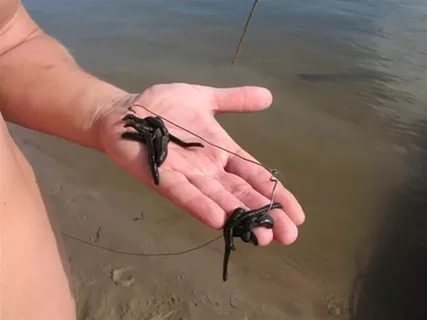
The leech is one of the effective baits that stays on the hook perfectly for bottom fishing on the river. Catfish, bream, burbot, silver bream, ide, chub, and perch are excellently caught using leeches. If there is a current in the fishing area, then fishing with a leech is very promising.
Leeches are collected under stones, boards and debris located at the bottom of the reservoir.
The beer is attached in approximately the same way as a worm. Before the nozzle, the suction cups are cut off. This needs to be done for two reasons. First, after trimming, the leech will bleed, which will attract catfish and other fish. Secondly, bottom debris will not stick to a leech without suction cups. Store the leech in a jar of water.
What to use to catch crucian carp in summer
In summer, crucian carp is characterized by increased activity. Constantly in search of food. But since in the summer there is a lot of varied food, crucian carp becomes extremely picky.
In cold water, bait is preferred, and when the water warms up, vegetable baits work better.
Using maggots and worms as bait in warm water is not always justified. If immediately after spawning and at the end of summer crucian carp readily grabs them, then in June-July it is better to catch it with plant bait. Dough is considered the best summer bait.
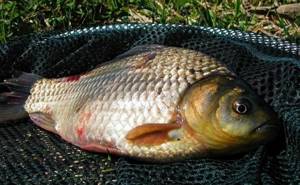
Small and medium-sized crucian carp bite well on semolina, bread, pearl barley, maggots and worms. To catch large crucian carp, it is advisable to hook cooked peas or canned corn. For large crucian carp, a combined bait of several pearl barley grains with a bunch of maggots or worms also works well.
In the summer it is necessary to experiment with attachments and baits, which must be combined with groundbait.
Zywiec
It’s hard to imagine fishing for predatory fish without live bait. This honorable quality may include small rudd, crucian carp bleak, roach, dace and other small fish. Live bait is threaded onto a single, double and triple hook. You can catch them yourself in the reeds and at promising points. For example, in channels where clean water flows you can almost always catch a dozen or two small rams or roaches.
To preserve live bait in a marketable form in the summer, use a small bucket with a lid. It is placed in the shade to keep out the sun. In winter, live bait is kept in a soft or hard small bucket, which fits easily into a fishing box.


